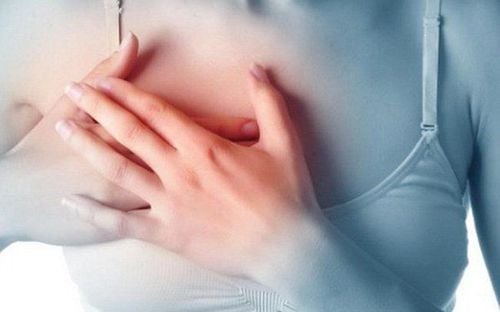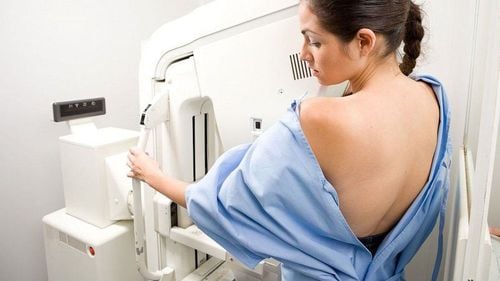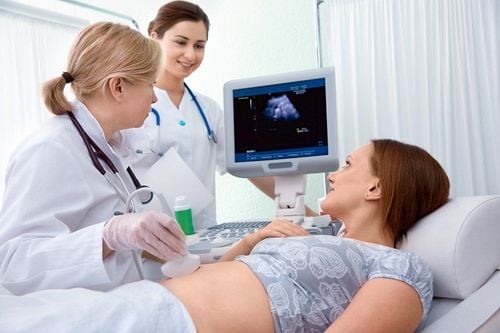This is an automatically translated article.
The article is made by Master, Doctor Ton Nu Tra My - Department of Diagnostic Imaging - Vinmec Central Park International General Hospital.
Mammography is an X-ray image of the breast parenchyma. This is one of the means that can be used to check for breast cancer in women who have no signs or symptoms of the disease. At the same time, mammography may also be used if a woman has a lump or suspected breast cancer.
1. What is a mammogram?
Mammography is a technique that uses low-dose X-rays to examine the breasts.
This technique is used in screening for early detection of breast cancer in asymptomatic women or in the diagnosis of breast cancer in women with palpable signs of breast cancer. mass, pain, nipple discharge, mastitis.
Is a non-invasive technique.
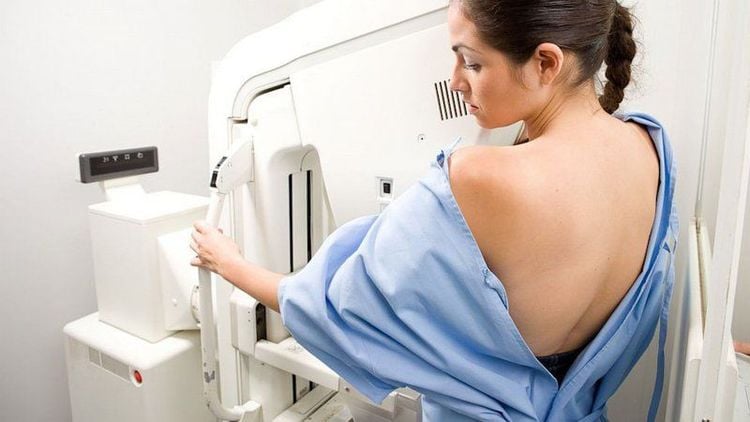
Chụp nhũ ảnh cho phép kiểm tra ung thư vú từ giai đoạn không có triệu chứng.
2. When to have a mammogram?
Mammography is a simple, safe and non-invasive imaging means with no contraindications.
If a woman between the ages of 40 and 74 has a close relative such as a mother, daughter, or sister who has had breast cancer, a mammogram should be performed once a year. These subjects are nearly twice as likely to develop breast cancer as the general population.
If a woman is between the ages of 40 and 49 with no family history of breast cancer, mammograms should be prescribed by a doctor, weighing the benefits and risks. If indicated, mammography should be performed every two years.
If a woman is 50 to 74 years old with no family history of breast cancer: a mammogram every two years is recommended.
If the woman is over 75: the benefits and limitations of continuing mammography need to be weighed. If mammography is indicated, it should be done every two to three years.
If the woman herself is at high risk for breast cancer: annual mammograms are recommended for women aged 30-74 if at least one of the following is present:
Has the BRCA1 or BCRA2 gene Having a close relative mother, sister, daughter, aunt, or BRCA1 or BRCA 2 gene Having a very strong family history of breast cancer such as having a mother, sister, daughter, aunt, or grandmother who was diagnosed with breast cancer breast cancer before age 50 Have had radiation to the chest wall before. In these cases, it is necessary to discuss directly with the doctor about the indications for mammography and other means in breast cancer screening.

Phụ nữ mang thai chống chỉ định thực hiện
3. How are mammograms taken?
The technician will ask to measure your height and weight before the mammogram.
You need to complete the checklist given by the technician with questions related to breast pathology.
Then, the technician will check the mammogram machine before taking the picture. You will be asked to place your breasts in the proper position of a specialized mammogram machine, a plastic sheet will be slowly pressed to compress the breasts and hold them in place for a few seconds.
Breast tissue compression is necessary to spread the breast tissue to help detect breast cancer. However, squeezing can make you feel a little uncomfortable. But rest assured as this only lasts for a few seconds. Let the technician know if you feel too much pain or discomfort. Next, the technician will multiply the mammograms, usually 4 images, two for each breast will be recorded. The technician will check the image quality; If not, you can take additional photos.
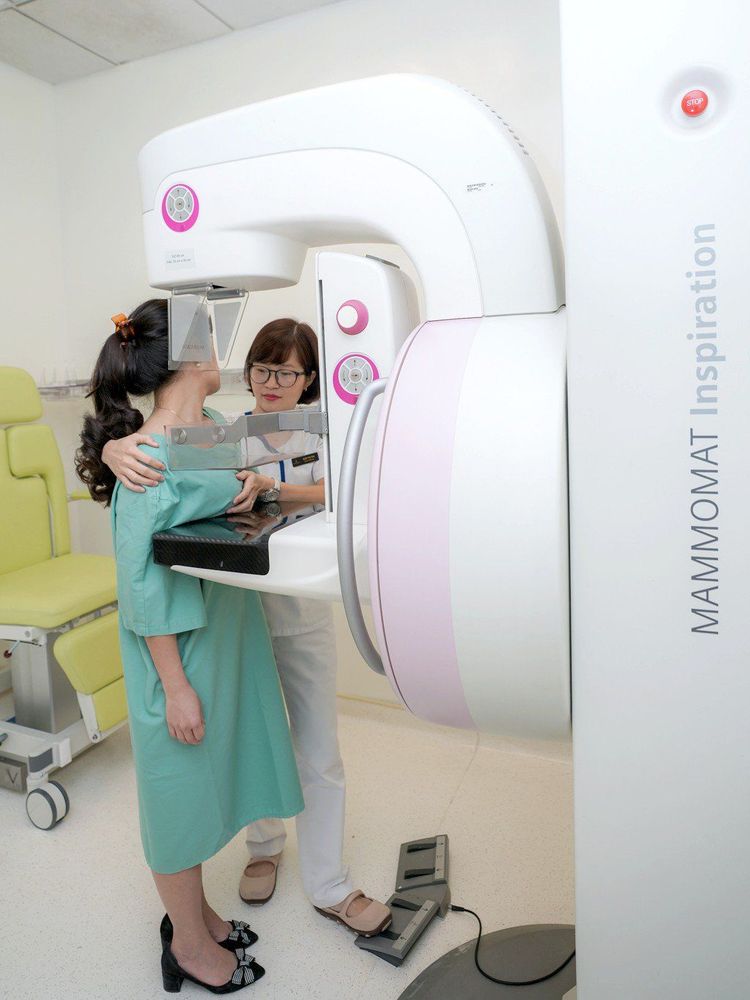
Khi chụp nhũ ảnh, người bệnh cần làm theo hướng dẫn của nhân viên y tế
4. Notes before coming for mammography
Do not use deodorant, absorbent powder or lotion on the day of your mammogram. These products can make it difficult to read mammograms.
The time to go for a mammogram is when the breasts are least sensitive, preferably within 7-10 days from the time of menstruation. Some women also feel better if they don't have caffeine for a few days before a mammogram.
Do not wear perfume before entering the mammogram room.

Không sử dụng kem dưỡng da vào ngày đi chụp nhũ ảnh
5. Benefits of Mammography
5.1 Mammography improves long-term survival
Early detection of cancer means that treatment can be started earlier, giving a better prognosis in disease progression.
5.2 Highly effective mammography
Mammography screening has long been proven to be a good method for early detection of breast cancer . Even a mammogram can find lumps two or three years before a woman or doctor can feel or examine her for signs of cancer.
Since then, many studies have shown that mammography reduces breast cancer deaths by about 25% in women who are screened regularly.
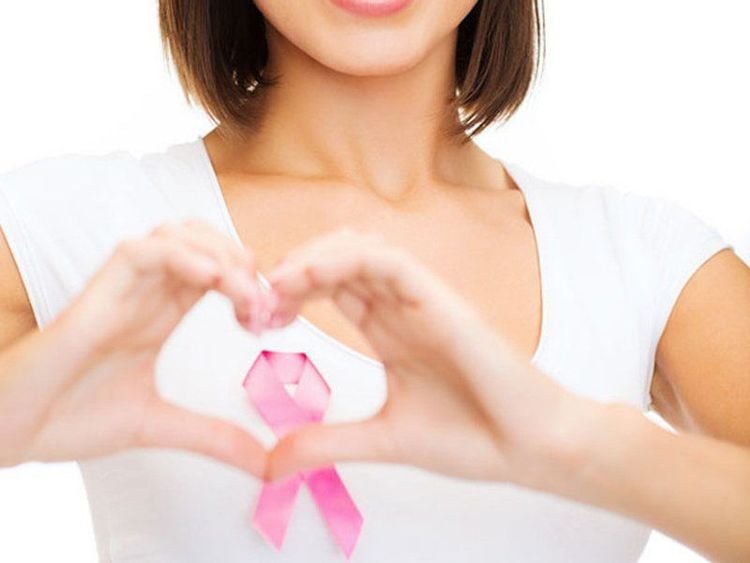
Chụp nhũ ảnh để phát hiện sớm ung thư vú
5.3 Breast cancer risk increases with age
The risk of breast cancer increases for women over the age of 50. More than 80% of new breast cancers diagnosed each year are in women 50 years of age and older.
6. Are there any limitations to mammography?
C Mammography does not always detect all cases of breast cancer. This can be influenced by the location of the cancer or the density of the breast tissue. About 25% of cancers in women aged 40-49 years cannot be detected by mammography compared with 10% in women over 50 years of age. Therefore, the indication of additional imaging tests such as mammography, breast magnetic resonance is necessary.
In summary, mammography is a safe and effective means of detecting breast cancer early before a patient has breast cancer symptoms. Because the risk of breast cancer increases with age, mammograms are an essential imaging test during routine physical exams in all women over the age of 50 in general, especially those with a family history. breast cancer in particular in order to detect breast cancer early.
Master. Dr. Ton Nu Tra My is currently a Doctor of Radiology, Vinmec Central Park International General Hospital. Dr. Tra My used to be a lecturer in the Department of Diagnostic Imaging, Hue University of Medicine and Pharmacy and had a long time working at the Department of Diagnostic Imaging, Hue University of Medicine and Pharmacy Hospital.
For examination and treatment at Vinmec, please go directly to Vinmec health system or register online HERE.







